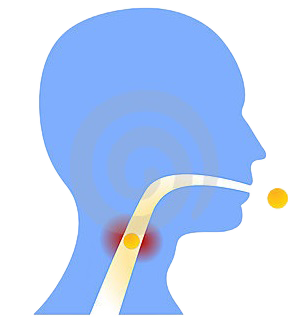Snoring & Sleep Disorders
SLEEP APNEA
Sleep apnea is a condition where breathing obstruction actually leads to a lack of airflow for extended periods of time. Often sleep apnea is associated with early morning fatigue, daytime sleepiness, morning headache, high blood pressure, attention issues, sometimes worsening of depression. When extensive disease is present, sleep apnea can increase the risk of heart attack and stroke.
A diagnosis of sleep apnea is usually made through a clinical exam and a sleep study. The results might lead to the use of a short-term or long-term oxygen mask therapy. Surgical interventions such as removal of the tonsils, septal and turbinate surgery to improve nasal airflow, and/or trimming of the soft palate may also be considered if appropriate.
The Epworth Sleepiness Scale
The ESS is a questionnaire designed to evaluate levels of excessive sleepiness. This test is a standardized screening tool used extensively by the American Association of Sleep Medicine (AASM) that will help you measure your general level of sleepiness. It asks you to rate the chances that you would doze off or fall asleep during different routine situations. Answers to the questions are based on a scale from 0-3, with 0 meaning you would never doze off or fall asleep in a given situation, and 3 meaning there is a very high likelihood you would doze or fall asleep in that situation.
Situation
- Sitting and reading
- Watching television
- Sitting inactive in a public place, such as a theater or meeting
- As a passenger in a car for an hour without a break
- Sitting down to rest in the afternoon
- Sitting quietly after lunch (when you’ve had no alcohol)
- Sitting and talking to someone
- In a car, stopped in traffic
Scoring the ESS 0= would never doze 1= slight chance of dozing 2= moderate chance of dozing 3= high chance of dozing
The Epworth Sleepiness Scale Key Total score of 10 or more suggests the you may need further evaluation by a physician to determine the cause of your excessive sleepiness and whether you have an underlying sleep disorder. A total score of 10 or less suggests that you may not be suffering from excessive sleepiness.
SNORING
Snoring can be more than just annoying
While 45% of adults snore at least occasionally, it’s estimated that 25% of adults are more habitual “severe” snorers. Even if it doesn’t directly bother the snorer, snoring may disturb the sleep of others and can become a major cause of strain in family relationships. Snoring can be a medical problem as well, causing the snorer to sleep restlessly and causing difficulty staying alert and awake during the day. Loud snoring may be accompanied by episodes of obstructed breathing, a potentially serious condition known as sleep apnea.
What Causes Snoring?
There are several areas in the upper air passageway which may cause or contribute to snoring, including difficulty breathing through the nose or a very large tongue, however, the most common cause is excessive vibration of the soft palate. A number of treatment alternatives are available to decrease this vibration including laser and radio-frequency ablation and injection snoreplasty. Each of these procedures are performed in the office under local anesthesia and typically takes about 20 minutes. Depending which treatment is utilized, recovery can be minimal require prescription pain medication. Results are often noticed within 4-6 weeks. If satisfactory results have not been achieved by that time, a repeat or alternative procedure may be indicated. Examination by our snore specialist will determine which treatment options would most likely be best for you.
Treatment Options for Snoring
LAUP
(laser-assisted uvulopalateoplasty) is the most common procedure for treatment of snoring. This treatment involves removal of all or part of the soft palate and all or part of the uvula and recovery can take up to two weeks.
RFA
(radio-frequency ablation) uses low heat cautery to reduce the size and thickness of the palate. Recovery time is short and usually involves only minimal discomfort during healing.
Injection Snoreplasty
involves injection of a hardening agent into the soft palate to reduce its vibration. Recovery time is short and usually involves only minimal discomfort during healing.
Oral Appliance
– The use of an oral appliance is another approach to snoring treatment, in which a mouth guard type of device called a Snoreguard is custom-fitted by our associated dental colleague to move the tongue and jaw forward during sleep. using this device can quiet 65-70% of disruptive snorers. The pros and cons of this device will be discussed with you during your consultation.
Tips to reduce snoring
- Try to sleep on your side. The throat structures may tend to fall backward when some people sleep on their back. If you snore only when lying on your back, sew a pocket in the back of your pajamas and place a tennis ball in it to keep you from rolling over onto your back during the night.
- If you are overweight, diet. Even partial weight loss is likely to improve noisy breathing during sleep. Regular exercise will help you to lose weight, and also help to tone muscles and improve lung function.
- Avoid alcohol, tranquilizers, sedatives and sleeping pills within four hours of bedtime. These all reduce muscle tone and may worsen snoring.
Extra advice for snorers and their partners
- An important part your snoring history is also often available only from your sleeping partner, especially observing for possible apnea.
- Wearing ear plugs can sometimes be the simplest solution to the problem of a snoring partner.




